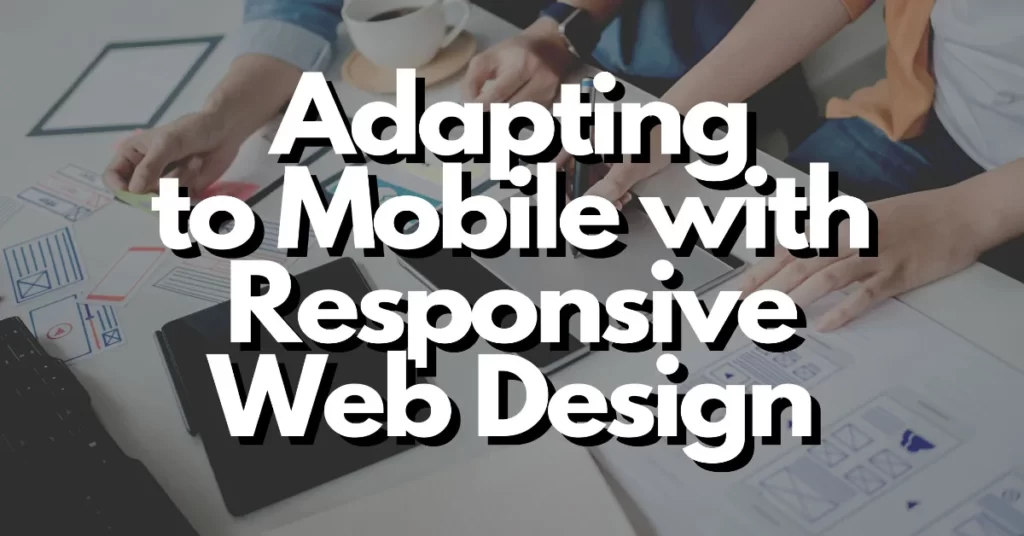Global mobile communication is the wave of the present and into the future. Once businesses have perfected their website for traditional computer screen resolutions, it’s important to optimize that design for mobile phones and tablets to reach visitors at every potential access point.
There are different ways to do this, such as designing a specific mobile site and URL. But another method has grown in popularity over the past year: responsive web design (RWD).
What Is Responsive Web Design?
RWD manipulates a flexible set of code that automatically adjusts a website’s design and functionality to suit whatever device might be accessing it. This means different design aesthetics and even content delivery for computers, smartphones and tablets with any screen size and resolution.
It’s not to be confused with its similar counterpart, adaptive web design. Adaptive web design readjusts websites based on pixels and fixed-width layouts, while RWD takes a more fluid approach. RWD uses “media queries” to determine which device and resolution the website is being accessed from, and all of the elements on a page are sized accordingly by proportion instead of pixels. For example, no matter what size screen a user accesses a website from, on each device, one column may take up 40% of a page while the second and third each take up 30% of the page.
Without these automatic website changes for each type of device, menus, images or alignments might be skewed or disproportional. Content could be muddled, and users might have to pinch and zoom or scroll around poor site navigation just to find content. Using this approach to web design, the most important content can appear in a clear and appealing way on each different device.
For example, this Disney website example shows the differences between how its web page can be seen on different devices. On the computer version, all elements are at their widest with empty space along the sides and a banner along the top. In the tablet version, the banner is smaller and at the bottom of the screen, the space disappears from the side of the Finding Nemo graphic, and the Frankenweenie video is centered and smaller. In the mobile version, the Finding Nemo video is removed from the top portion, the text above the lower video is larger, the video has less space on its sides, and the banner along the bottom fills up all of the screen.
Benefits and Drawbacks
One of the primary benefits of RWD is that the website maintains a consistent appearance and functionality on any device that accesses it. This includes content and design elements like images, text, and navigation. Mobile users also won’t have to pinch and zoom to see all of the contents of the page.
Another advantage is that the code is fluid and all in one location, so there’s not multiple sets of code for each site, and there’s only one content management system that needs to be used to keep the website’s content updated.
A responsive website can also be more useful than an app in certain respects. An app must be developed for each individual platform. With several different platforms available nowadays, that’s a lot of time to take to create an app that reaches every segment of an audience. A responsive website can deliver all of the necessary content for mobile users in one place and across all platforms at once.
These advantages are what makes RWD—or something like it—an almost necessary website element in the age of smartphones and tablets. Staying current with communication technology is critical for a business to stay in constant contact with its audience.
But there are disadvantages as well. As RWD delivers the same content to all devices, this may not account for all of the needs of each individual device user. For example, smartphone users are often shopping and looking for deals, so having those deals, promotions and coupons more visible on the mobile version would help facilitate their use of a business’ website, but RWD cannot account for that.
Another issue is page loading times. As desktop websites might be loaded with larger images, mobile devices may not be able to handle the load time for those images as well. This can dramatically reduce the performance of the website and accessibility for the user.
One final disadvantage is that converting to a RWD website takes more than a few tweaks of coding. These websites are costly and time-consuming to create because they involve a complete overhaul of the current site.
Whether or not RWD is right for businesses depends on their current needs for content and web design on mobile devices. To make this decision, businesses to evaluate these considerations and decide if RWD is worth the cost and effort.

